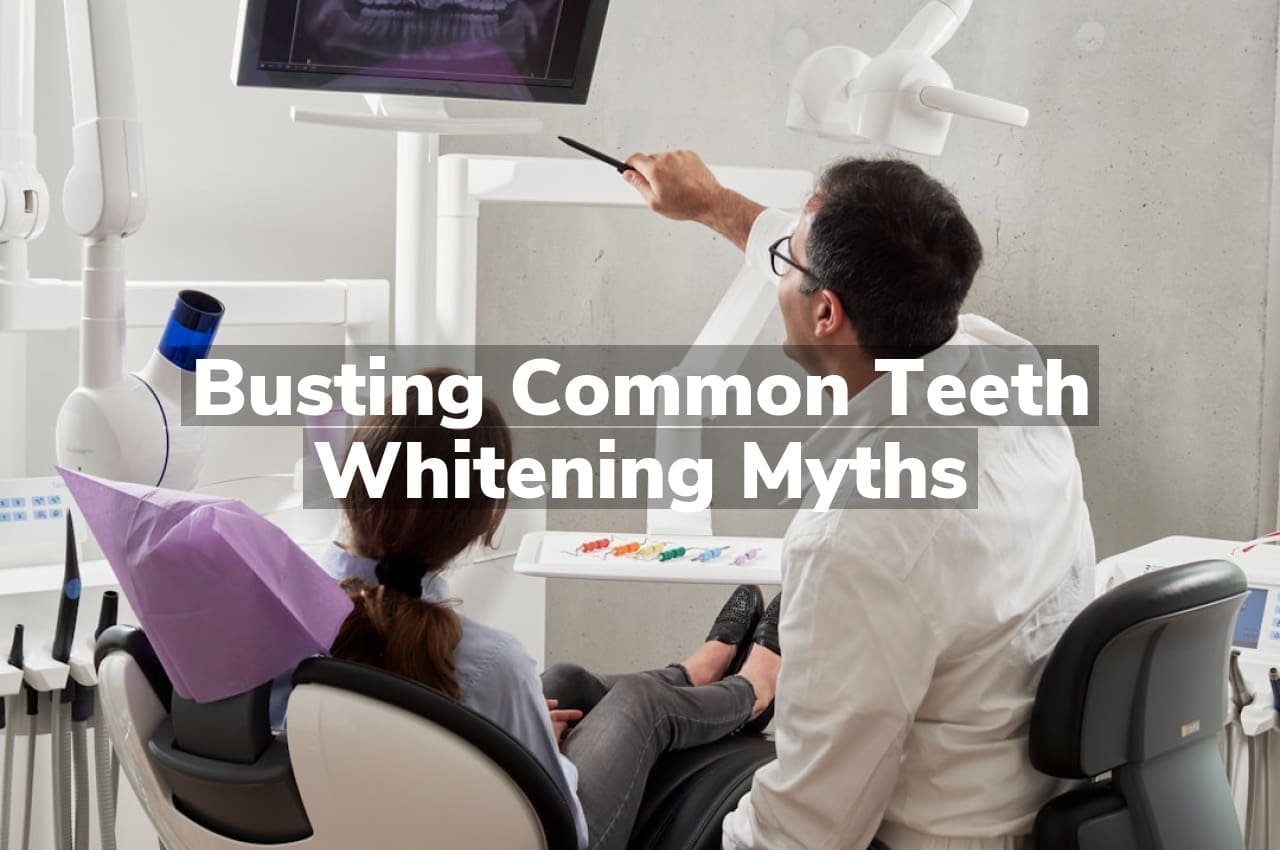Are you puzzled by the plethora of myths surrounding teeth whitening? This post aims to clarify misconceptions and provide a clearer understanding of what teeth whitening involves, without endorsing specific products or methods.
The Truth About Whitening Sensitivity
Teeth whitening has become a popular cosmetic procedure for achieving a brighter smile, but it’s often accompanied by concerns about sensitivity. A common myth suggests that all forms of teeth whitening inevitably lead to increased tooth sensitivity. However, it’s important to understand that sensitivity can vary greatly among individuals and the techniques used. Sensitivity during or after a whitening treatment is not a universal outcome but rather a potential side effect that some people may experience more than others.
For those interested in exploring teeth whitening options, it’s crucial to be informed about the different methods available and how they might affect your dental health. A comprehensive Guide to Professional Teeth Whitening Techniques can provide valuable insights into the various professional procedures, helping individuals make informed decisions based on their specific needs and concerns. Understanding the nuances of each technique can demystify the process and set realistic expectations regarding sensitivity and results.
Natural Teeth Color vs. Whitening Expectations
When it comes to teeth whitening, one of the most pervasive myths is the expectation that teeth can be transformed to an unnatural shade of white. It’s crucial to understand that everyone’s natural teeth color varies, and this baseline color significantly influences the potential outcomes of any whitening process. The natural color of teeth is not purely white; it ranges from light yellow to light gray shades, which is perfectly normal. The expectation that teeth whitening can achieve a stark, unnatural white is a misconception that needs to be addressed. The goal of teeth whitening is to enhance the natural beauty of your smile by reducing discoloration and stains, not to achieve an artificial level of whiteness that might look out of place.
Moreover, it’s important to have realistic expectations when considering teeth whitening. The results can vary widely depending on several factors, including the original shade of your teeth and the presence of intrinsic stains that might not respond well to whitening treatments. Understanding that teeth whitening is about enhancing your natural smile rather than achieving an unrealistic standard of whiteness is key. For those looking to explore professional teeth whitening options, it’s advisable to consult with a dental professional who can provide guidance based on your individual needs and expectations. Brighten Your Smile in Snohomish with Whitening.
Whitening Effects on Enamel Health
When it comes to teeth whitening, one of the most prevalent concerns revolves around its impact on enamel health. The enamel, being the outermost layer of the teeth, plays a crucial role in protecting our teeth from decay and sensitivity. Misconceptions abound, with many fearing that whitening procedures could potentially harm this protective layer. It’s essential to understand that the health of enamel is a significant consideration in the development and application of teeth whitening methods. Properly conducted whitening processes are designed with the safety and preservation of enamel in mind, aiming to brighten smiles without compromising the integrity of this critical dental defense.
Frequency Myths in Teeth Whitening
One of the most pervasive myths surrounding teeth whitening is the belief that you need to undergo the process frequently to maintain a bright smile. This misconception leads many to worry about the potential for damage to their enamel or overall oral health due to overuse. However, the reality is that the frequency of teeth whitening treatments varies greatly depending on individual factors such as diet, oral hygiene habits, and the natural color of one’s teeth. Understanding the truth behind these myths is crucial in maintaining both a healthy and radiant smile. For those seeking professional advice, Pilchuck Family Dentistry is a trusted Snohomish Dentist that can provide guidance tailored to individual needs.
Age-Related Whitening Myths Debunked
Many people believe that teeth whitening is less effective or even harmful as they age, but this is one of the most common myths that needs to be debunked. The truth is, teeth whitening processes work across a wide range of ages, and the effectiveness or safety does not significantly decline with age. This misconception stems from the natural changes in dental health and enamel strength over time, but professional approaches to teeth whitening consider these factors carefully. It’s important to understand that age alone is not a barrier to achieving a brighter smile, debunking the myth that teeth whitening is only for the young or becomes increasingly risky as one grows older.
Conclusion
Now that we’ve debunked some common teeth whitening myths, take the next step by calling us at 360-568-1198 or read our reviews on Google Maps.
